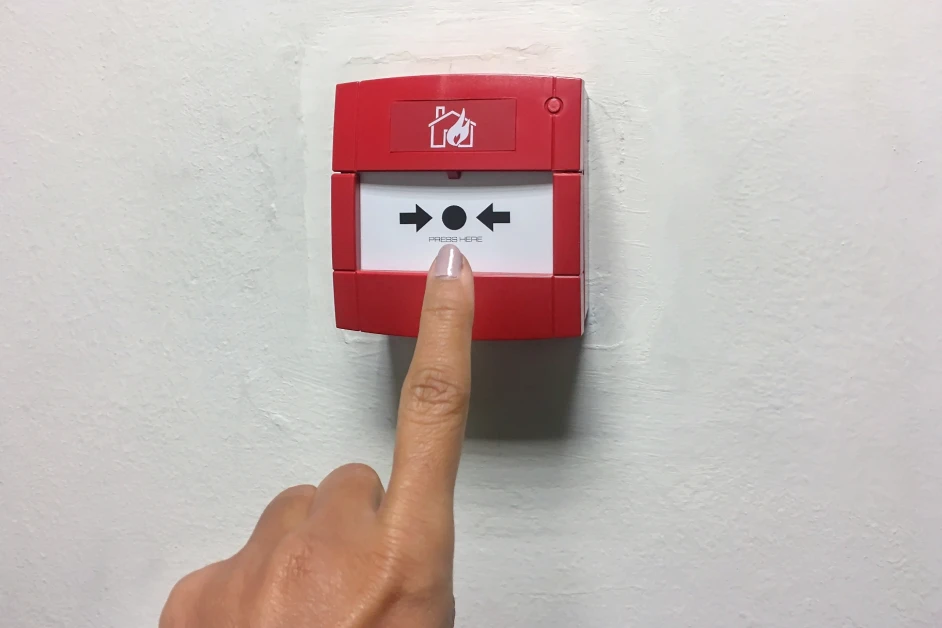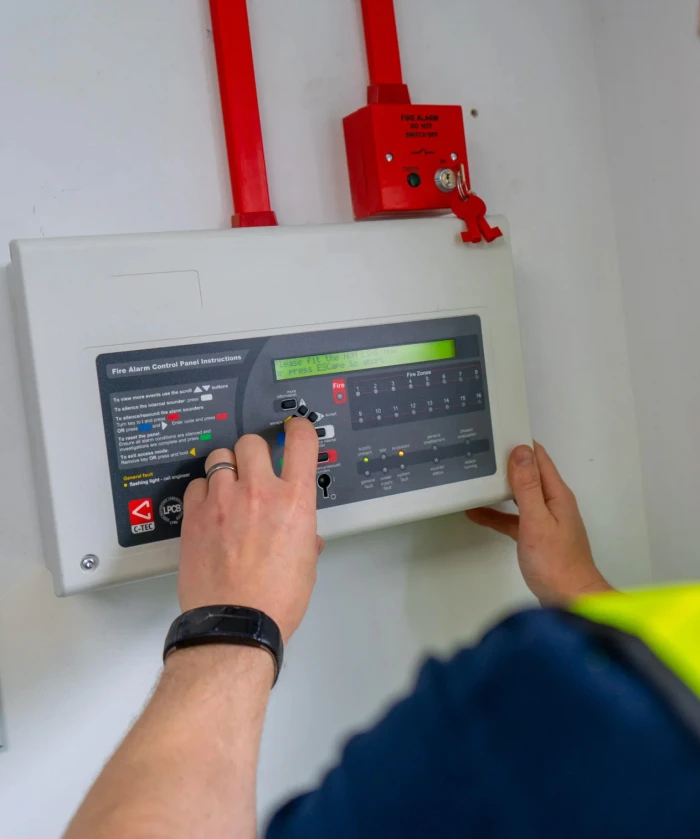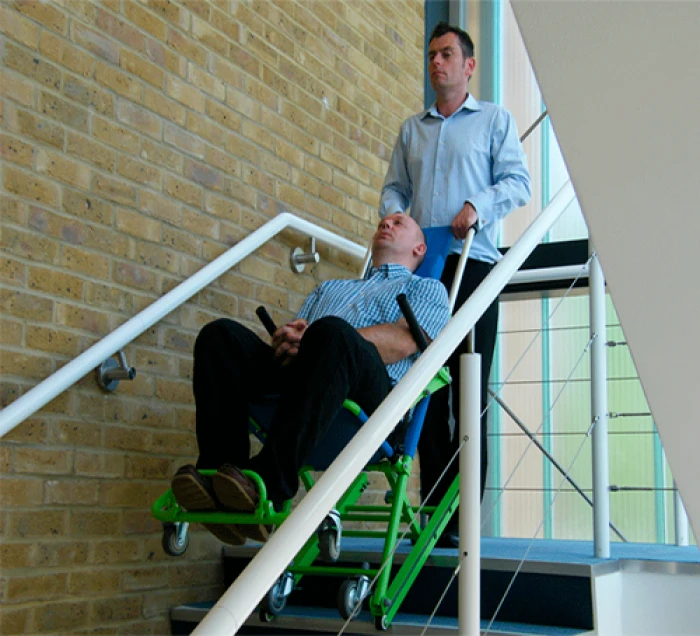
Need assistance?
Need Assistance? Call Us 0330 058 0631





















 Book a service
Book a service

29/05/2024 • by Lynsey B

False alarms occur more than you think. In the context of fire safety, this is an ongoing and costly issue in the UK. These unnecessary alerts not only disrupt daily life and business operations but also lead to significant financial losses. By understanding and addressing the issue, we can work towards minimising false alarms and their negative effects.
False alarms in the UK cost billions of pounds annually. These costs are not just financial; they also include wasted time and resources. Furthermore, they decrease attention among both the public and emergency services to fire safety. When fire alarms are triggered unnecessarily, fire brigades must respond. If these alarms turn out to be false, they will have unnecessarily diverted resources from actual emergencies and increased operational costs. Additionally, repeated false alarms can lead to complacency, reducing the urgency with which real alarms are handled.

False alarms are more than just a nuisance; their impacts are wide-ranging and significant. They can affect various elements of society and operations. Here are some financial, operational and psychological consequences of false alarms.
The financial burden of false alarms is considerable. When fire services respond to a false alarm, several costs are incurred. For example, fuel expenses for fire engines, maintenance of equipment and the manpower required to manage the call-out. These expenses add up quickly, straining the resources of fire departments and local governments.
For businesses, the financial impact can be even more apparent. Each false alarm results in an evacuation, disrupting daily operations and leading to lost productivity. Employees may lose valuable work time and as a result, miss important deadlines. For retail businesses, the interruption can mean lost sales, as customers leave the premises and may not return once the false alarm is resolved.
Additionally, frequent false alarms can lead to increased insurance premiums for businesses. Insurers may view repeated false alarms as a sign of inadequate safety measures or poor maintenance, leading them to raise premiums to offset the perceived risk.
The operational impact of false alarms is equally significant. Each false alarm diverts fire service resources away from genuine emergencies. Therefore, this potentially delays responses to real fires or other emergency incidents. In a situation where minutes can mean the difference between life and death, such delays can have serious implications for public safety.
When fire crews are dispatched to a false alarm, they are temporarily unavailable to respond to actual emergencies. This can lead to a dangerous scenario where real incidents receive delayed responses, putting lives and property at risk. Furthermore, if multiple false alarms occur in quick succession, it can stretch the resources of fire services thin. This then reduces their overall effectiveness and readiness.
The psychological impact of false alarms, while less tangible, is no less significant. One of the most concerning consequences is the phenomenon known as "alarm fatigue." When people are repeatedly exposed to false alarms, they can become desensitised to the sound. They end up treating it as a false threat rather than a real emergency.
Alarm fatigue can lead to complacency, where individuals are less likely to respond promptly and appropriately to fire alarms. This complacency can be dangerous, especially in environments where rapid evacuation is critical, such as schools, hospitals and large office buildings. In a real emergency, delayed responses can result in increased casualties and property damage.
Furthermore, the frequent occurrence of false alarms can erode trust in the fire alarm system itself. Occupants of a building might start to ignore alarms or delay their response, assuming it to be another false alarm. This decrease in trust undermines the effectiveness of fire safety protocols and can have catastrophic consequences in the event of a genuine fire.

Understanding the causes of false fire alarms is important in addressing and reducing their occurrence. False alarms can stem from a variety of sources, each of which requires specific strategies to stop.
Human error is one of the most frequent causes of false fire alarms. These errors can occur in several ways. For instance, staff or visitors might inadvertently trigger manual call points by accidentally pressing the alarm button. This can happen during routine activities, such as cleaning or moving furniture. In some cases, individuals may intentionally misuse alarm points, either as a prank or due to a misunderstanding of the system's purpose.
Additionally, careless handling of materials near smoke detectors can set off alarms. Activities that generate smoke, steam or dust can inadvertently activate smoke detectors. For example, cooking in non-designated areas or excessive use of aerosols. Moreover, inadequate training on how to use fire safety equipment and procedures can lead to mistakes. Employees may not be aware of how their actions can inadvertently trigger alarms.
Technical issues within the fire alarm system itself can also lead to false alarms. Neglecting regular maintenance can result in malfunctioning detectors, alarm panels and other components. Dust accumulation, corrosion or wear and tear can cause sensors to misfire. As systems age, their reliability can decrease, leading to more frequent false alarms. Electrical issues, such as short circuits or power surges, can trigger false alarms. These faults might arise from poor installation, damage to the wiring or interference from other electrical devices.
The environment in which smoke detectors are installed plays a significant role in the incidence of false alarms. For example, areas like kitchens, bathrooms and laundries produce steam and high humidity levels. In turn, this can be mistaken for smoke by certain detectors.
Dust particles and small insects can interfere with smoke detectors, especially those that use optical sensing technology. Detectors in dusty environments, such as construction sites or areas with heavy foot traffic, are particularly susceptible. Additionally, strong-smelling aerosols and certain cleaning products can produce vapours that are detected as smoke. This is common in offices or public buildings where cleaning occurs regularly.

Activities in the vicinity of smoke detectors can inadvertently trigger false alarms. Renovation or construction activities generate dust, vibrations and fumes that can set off alarms. For example, cutting, drilling and sanding can create dust clouds that mimic smoke. Routine maintenance tasks, such as painting, welding or using power tools, can also produce smoke like particles or heat. Similarly, the use of aerosol sprays, such as deodorants, air fresheners or insecticides, can trigger smoke detectors. These sprays create fine particles that are detected as smoke.
The placement of smoke detectors significantly affects their performance. Improperly placed detectors are more likely to cause false alarms. For instance, detectors placed too close to kitchens or bathrooms are more prone to being triggered by cooking fumes or steam. It is essential to position detectors away from these areas to reduce false alarms. Detectors located near ventilation ducts can be exposed to dust and particles from the HVAC system. Ensuring that detectors are placed away from vents can help mitigate this issue. Additionally, installing smoke detectors in areas with consistently high humidity can lead to false alarms. Using heat detectors or multi-sensor alarms in such locations can be a better option.
Reducing false alarms is essential to mitigating their financial, operational and psychological impacts. Implementing effective strategies and using appropriate tools can help minimise these unnecessary disruptions.
One effective measure to prevent false alarms is the installation of protective covers over manual call points. These covers serve as a physical barrier that requires intentional effort to activate it. Therefore, the protective covers are effective in reducing the likelihood of accidental or malicious triggers. When the cover is lifted, a local alarm sounds, alerting individuals nearby and deterring misuse. This simple yet effective call point protection can significantly reduce false alarms caused by human error.
Routine inspection and maintenance of fire alarm systems are important and help to reduce false alarms. Regular maintenance ensures that detectors remain clean and correctly positioned. For instance, dust, debris or wear and tear can impair the performance of smoke detectors. Regularly cleaning detectors and replacing worn components can help maintain their accuracy and reliability. Additionally, periodic testing of the entire fire alarm system can help identify and rectify faults early before they lead to false alarms.
Educating staff on the correct use of fire safety equipment and the importance of preventing false alarms can be very effective. Proper training ensures that employees understand how their actions can impact the fire alarm system and the steps they can take to avoid accidental activations. Training programs should cover the proper handling of materials near detectors, the correct use of alarm points and the procedures to follow if an alarm does go off. Additionally, staff should be informed about the importance of reporting any potential issues with the alarm system promptly. By fostering a culture of awareness and responsibility, businesses can significantly reduce the incidence of false alarms caused by human error.

Modern alarm systems with advanced sensors represent a significant advancement in fire detection technology. These systems are designed to differentiate between real fires and benign stimuli such as steam, dust or aerosols. For example, multi-sensor detectors use a combination of smoke, heat and carbon monoxide detection to provide a more accurate assessment of fire conditions. This reduces the likelihood of false alarms triggered by non-fire-related factors. Upgrading to such advanced alarm systems can substantially lower the incidence of false alarms. Businesses should consider investing in these modern systems to improve their fire safety protocols and minimise disruptions caused by false alarms.
Another aspect of reducing false alarms involves making environmental adjustments where necessary. This includes ensuring that smoke detectors are appropriately placed, away from kitchens, bathrooms and other areas prone to steam or humidity. Detectors located too close to these areas are more likely to be triggered by everyday activities, such as cooking or showering. Additionally, areas with high levels of dust or other particulates should be equipped with detectors that are less sensitive to such conditions.
If your business experiences a false alarm, it is essential to handle the situation appropriately to minimise disruption and prevent recurrence. Firstly, ensure you evacuate the building safely. Even if you suspect the alarm is false, always evacuate the building during a fire alarm. Safety is the priority and it is extremely important to follow established evacuation procedures. Next, see if you can identify the cause of the potential fire. Once the building is evacuated and it is safe, investigate the cause of the alarm. Determine whether it is a real threat or a false alarm. If it is found to be a false alarm, consider whether it was due to human error, a system malfunction or environmental factors.
If the fire service department has responded, inform them of the false alarm and provide any relevant details about the cause. This helps them record and analyse the incident. Finally, review your fire safety procedures. Assess your strategies to identify any gaps or areas for improvement. This might include additional staff training, system upgrades or changes in maintenance routines.
Currently, fire services in the UK do not charge for responding to false alarms. However, there has been ongoing discussion about introducing such charges to cover the costs associated with these unnecessary call-outs. The idea is that charging for false alarms could incentivise businesses and property owners to take more proactive measures to prevent them. While the prospect of charges is still under consideration, it is essential for businesses to take steps to minimise false alarms to avoid potential future costs.

We use cookies to enhance your site experience. Choose your preferences below.
